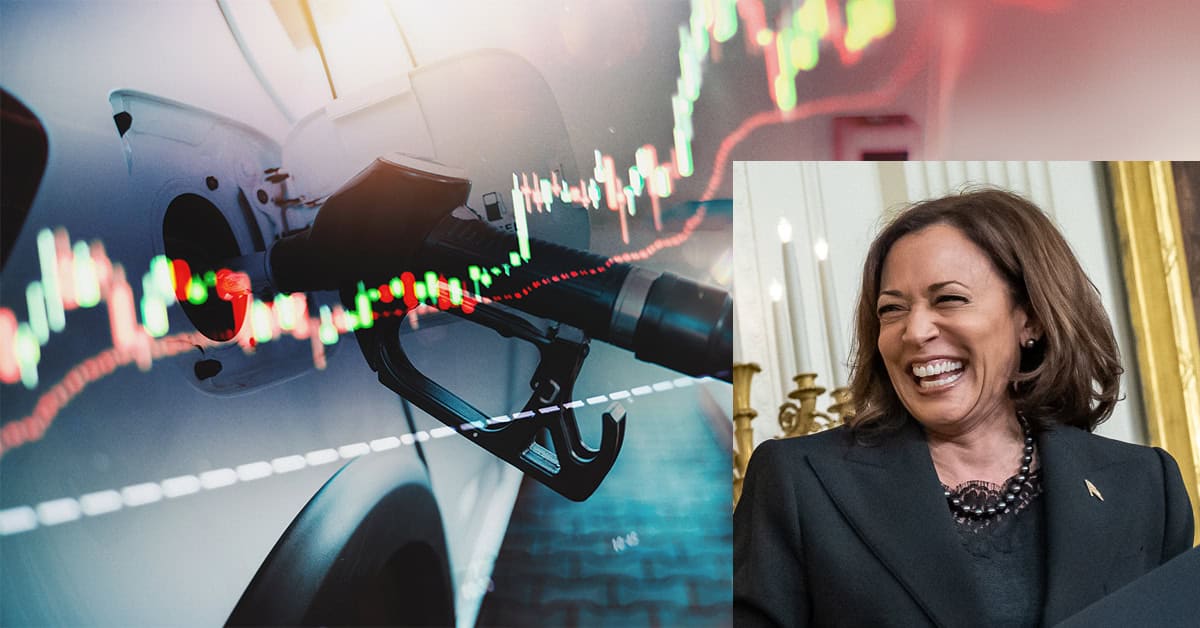by Tom Harris, America Outloud:

If Americans want a preview of what is in store for them if Vice President Kamala Harris is elected president and then implements a federal “carbon” tax, a tool she has stated on numerous occasions that she supports, all you need do is look north to my country, Canada. After all, we have had an ever-growing “carbon” tax for the past six years. Harris (no relation to me) proposed such a tax during her 2020 campaign, an extra tax on firms proportional to the amount of “greenhouse gas emissions” they emit.
TRUTH LIVES on at https://sgtreport.tv/
Canada’s carbon tax was launched in 2018 at $10 (Canadian dollars, which are worth about 74 US cents) per tonne of carbon dioxide (CO2) equivalent emitted. It rises each year by $15 to “at least” $170 per tonne by 2030 and now stands at $80 per tonne. Of all the climate policy-related revenues to governments in Canada (i.e., costs to consumers), most are from the carbon dioxide pricing system.
Our carbon tax is added to the price of more than 20 different fuel sources that produce greenhouse gas emissions when burned for energy, including gasoline, propane, diesel, and natural gas. Like with the plan Harris supports, the additional cost of each fuel depends on how much greenhouse gas is produced when that fuel is burned to make energy.
The carbon tax on gasoline is now 17.6 Canadian cents per liter (a liter is slightly smaller than a US quart). And, get this: the government adds a sales tax (called Harmonized Sales Tax or HST in Canada, which is 13% in Ontario, for example) on the carbon tax, so consumers are dinged twice whenever they buy gas. Filling a 20-gallon Dodge Grand Caravan tank costs $13.37 in carbon tax or $15.11 after HST. By 2030, this will be $32.11 in carbon tax every time we fill up.
The carbon tax for a liter of diesel fuel is now 21.39 cents. Filling a Peterbilt Model 389 truck used to haul cattle (fuel capacity ~300 gallons) costs $291.53 in carbon tax or $329.43 with HST.
By 2030, this will be about $700 every time the truck fills up.
The carbon tax for propane is 12.38 cents a liter. Recharging a standard 20-pound barbecue propane tank costs $2.20 in carbon tax or $2.49 with HST. By 2030, this will be $5.29.
On average, Canadian households use about 2,280 cubic meters of natural gas in a year, mostly for heating. At $80 per tonne, the carbon price will add 15.3 cents per cubic meter of natural gas. Therefore, the average annual carbon price a householder pays for natural gas in Canada is $349, or $394 with HST. By 2030, this will be $838.
Farmers usually use natural gas (and propane) for grain driers. By 2030, Ontario Grain Farmer Magazine estimates that it will cost $46 per acre for the carbon tax to dry grain off-farm. In other words, $46,000 for a 1,000-acre farm. The total impact of the carbon tax (both indirect and direct costs) is estimated by Grain Farmers of Ontario to reach $122 to $160 per acre.
Canada’s Parliamentary Budget Office estimated that the total direct revenue from carbon pricing over the period 2019-20 to 2023-24 would be $31.2 billion, or $32.3 billion with HST. In Budget 2024, Finance Canada projected that the “pollution pricing framework” proceeds will rise from $10.4 billion in 2023-2024 to $20.7 billion in 2028-2029. That would place the total proceeds over the decade at over $80 billion. With such a huge tax windfall, it is easy to see why the Canadian government likes this approach!
All this is driven primarily by the “Transnational Progressive Movement” that I described in our radio show on the America Out Loud Talk Radio Network at “How to fight back against the ‘war on farming.’” The movement is an alliance between powerful left-wing groups, including the World Economic Forum, the Club Rome, various United Nations agencies, the Open Society, and their fellow travelers in academia and business. Their goal is clearly to supplant our democratic forms of government with ones run by unelected technocrats who believe they know best how to run the world. They don’t admit to this, of course. They tell us that they are pushing carbon taxes and other climate actions to stop dangerous climate change.
However, as I have discussed often on these pages, there is no dangerous climate change currently underway, and none appears likely in the foreseeable future. In fact, it is not even theoretically possible for increasing carbon dioxide to cause problematic temperature rise at today’s level of the gas.
Read More @ AmericaOutloud.news



